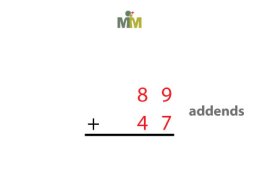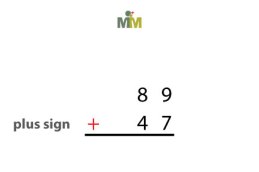 In the blog “Standard Algorithm of Addition: Part 1,” we learned how to set up addition problems in a vertical format so that we can manually calculate their sum. We also learned the mathematical terms for the components of arithmetic expressions of additions. In the blog “Standard Algorithm of Addition: Part 2,” I used a {visual model} to explain the concept behind this fundamental algorithm using green square blocks and blue rods to represent the addends. In this blog, I will show you how the standard algorithm works {number model}.
In the blog “Standard Algorithm of Addition: Part 1,” we learned how to set up addition problems in a vertical format so that we can manually calculate their sum. We also learned the mathematical terms for the components of arithmetic expressions of additions. In the blog “Standard Algorithm of Addition: Part 2,” I used a {visual model} to explain the concept behind this fundamental algorithm using green square blocks and blue rods to represent the addends. In this blog, I will show you how the standard algorithm works {number model}.
First we set up the arithmetic expression in a vertical format (A). Now we will first focus on the ones column and work our way from right to left (B). We mentally add the digits in the ones (9+7=16). Note the sum is greater than 9. This sum is equivalent to 1 unit of ten (blue rod) and 6 units of ones (green squares) (C). I write the digit for the 6 units of one in the ones column under the underline (D). I place the 1 digit of ten at the top of the tens column (E).
Working our way from right to left, we move to the tens column (F). We add the digits in this column noting that we are actually adding multiples of ten (G). Since the sum is not greater than 99, we simply write the sum of the digits in the tens column underneath the underline (H). Therefore, the sum of the addends, 29 and 47, is 76 (I). It is the most common technique of addition taught to math students, but it is not the only one. We’ll look at some other addition algorithms in future blogs.














